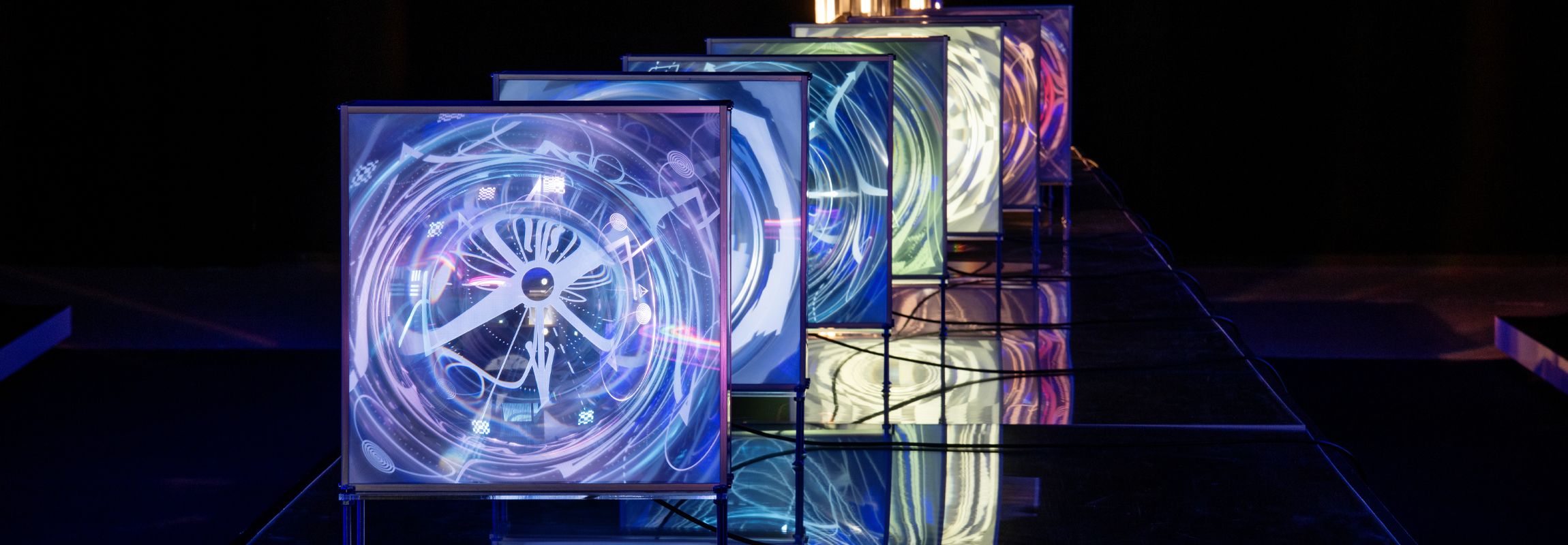Opening on Thursday 22 February, 6 pm.
From Tuesday to Sunday
11 am – 6 pm
Closed on Monday
Free Entry
Punctuated by crafted translucent sigils and informed by practical and speculative dialogues with computer and environmental scientists at EPFL, A Spectrum of Lost and Unnamed Colours is a mesmerizing mixed-media installation that takes us on a journey while calling for a holistic categorization of various types of color loss.
In a not-too-distant future, a media archaeologist has tasked herself with compiling an atlas dedicated to lost or unknown ways of seeing. During this mission she finds herself captivated by a Neon Rainbow Fairy Light, an object seemingly plucked from a child's bedroom. The archeologist proclaims the fairy light to be a quintessential artifact that encapsulates the entire history of the decline of nature's original "glitch"—the atmospheric rainbow.
Proper observation of rainbows has become rare due to a double process of pollution. On the one hand, climate change, environmental degradation, and light pollution have dulled atmospheric rainbows’ brilliance, making their occurrence increasingly unusual and their sightings more precious. On the other hand, within the realms of image processing, digital pollution has corrupted and distorted the representation of rainbows even more: as generative artificial intelligence struggles to differentiate between symbolic representations—the rainbow-alike—and actual depictions of natural phenomena, images of authentic rainbows have become anomalous.
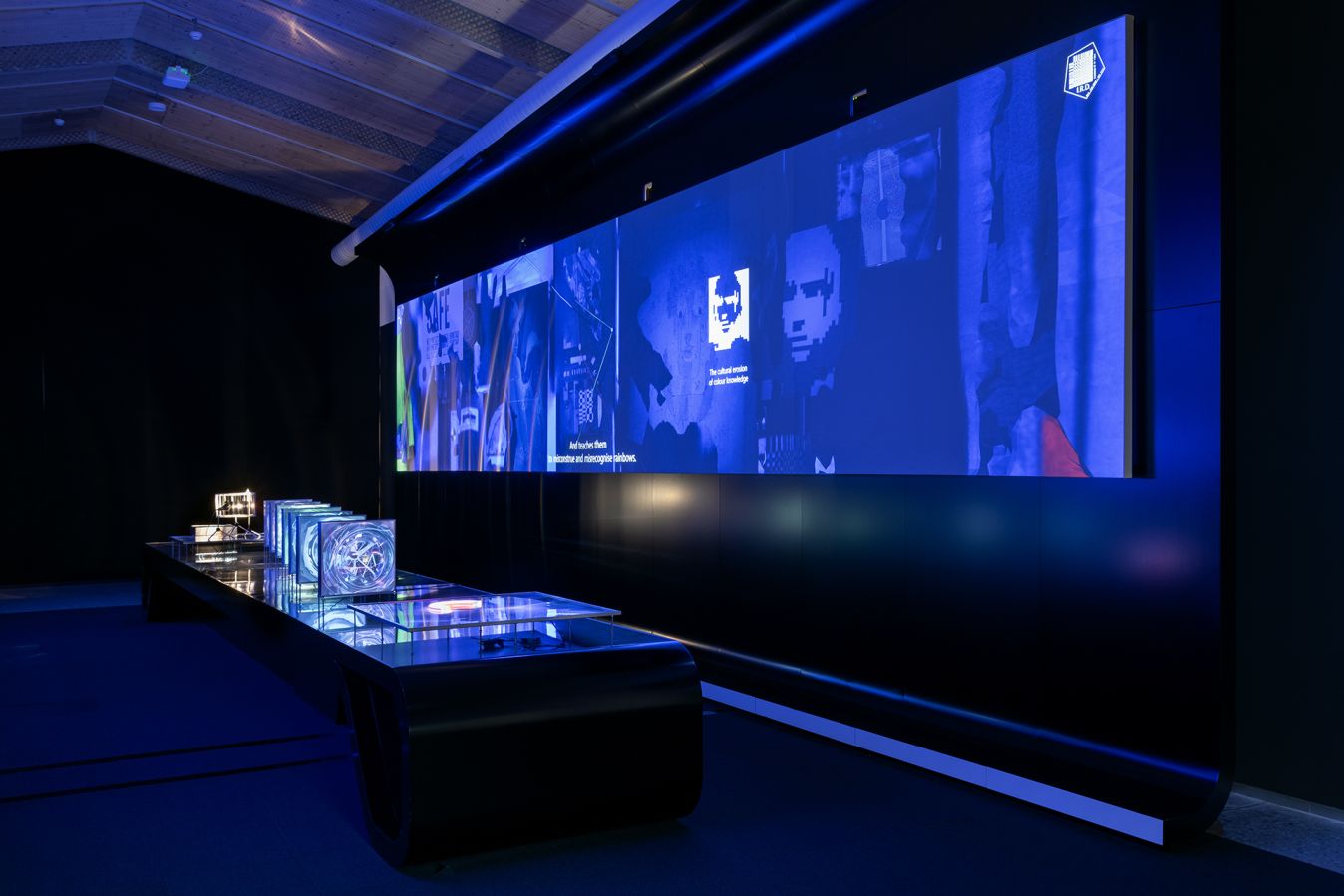
A Spectrum of Lost and Unnamed Colours, Rosa Menkman, 2024
© the artist and EPFL Enter the Hyper-Scientific.
Photo: Remy Ugarte Vallejos
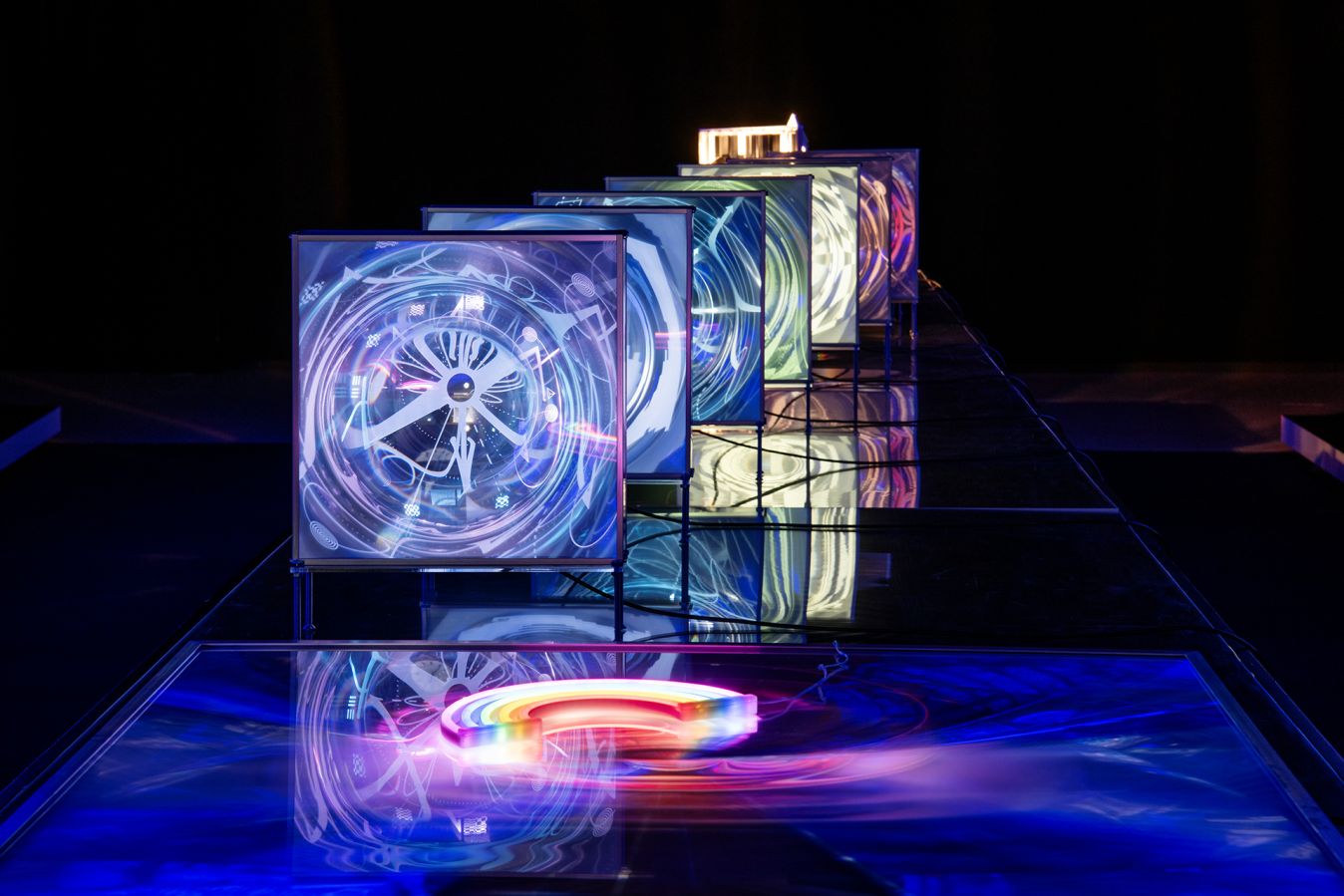
A Spectrum of Lost and Unnamed Colours, Rosa Menkman, 2024
© the artist and EPFL Enter the Hyper-Scientific.
Photo: Remy Ugarte Vallejos
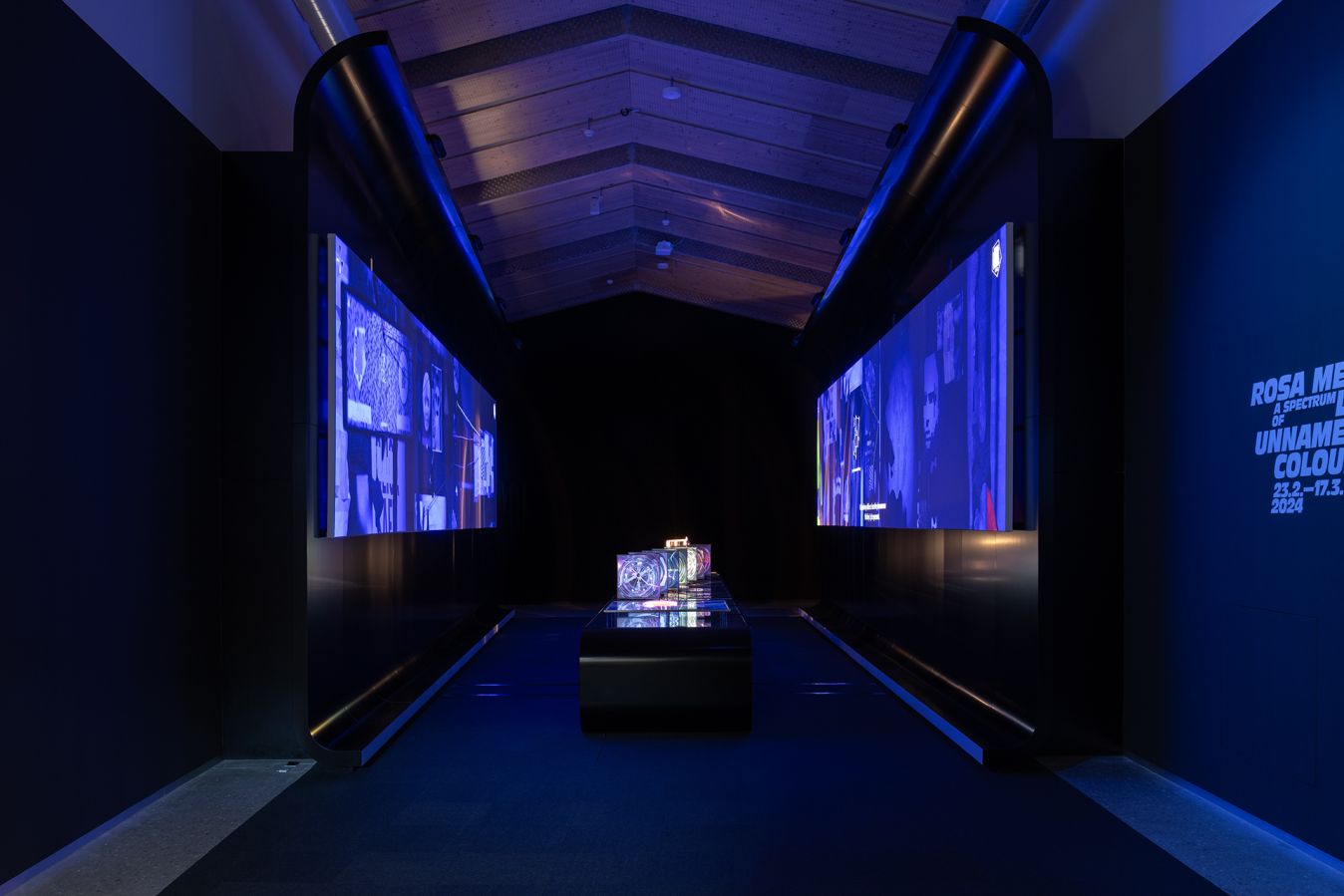
A Spectrum of Lost and Unnamed Colours, Rosa Menkman, 2024
© the artist and EPFL Enter the Hyper-Scientific.
Photo: Remy Ugarte Vallejos
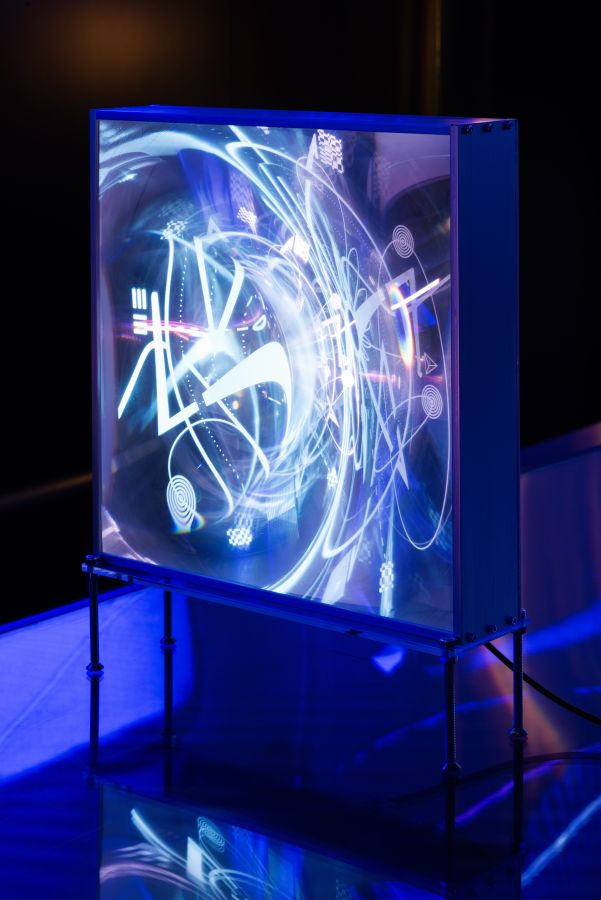
A Spectrum of Lost and Unnamed Colours, Rosa Menkman, 2024
© the artist and EPFL Enter the Hyper-Scientific.
Photo: Remy Ugarte Vallejos
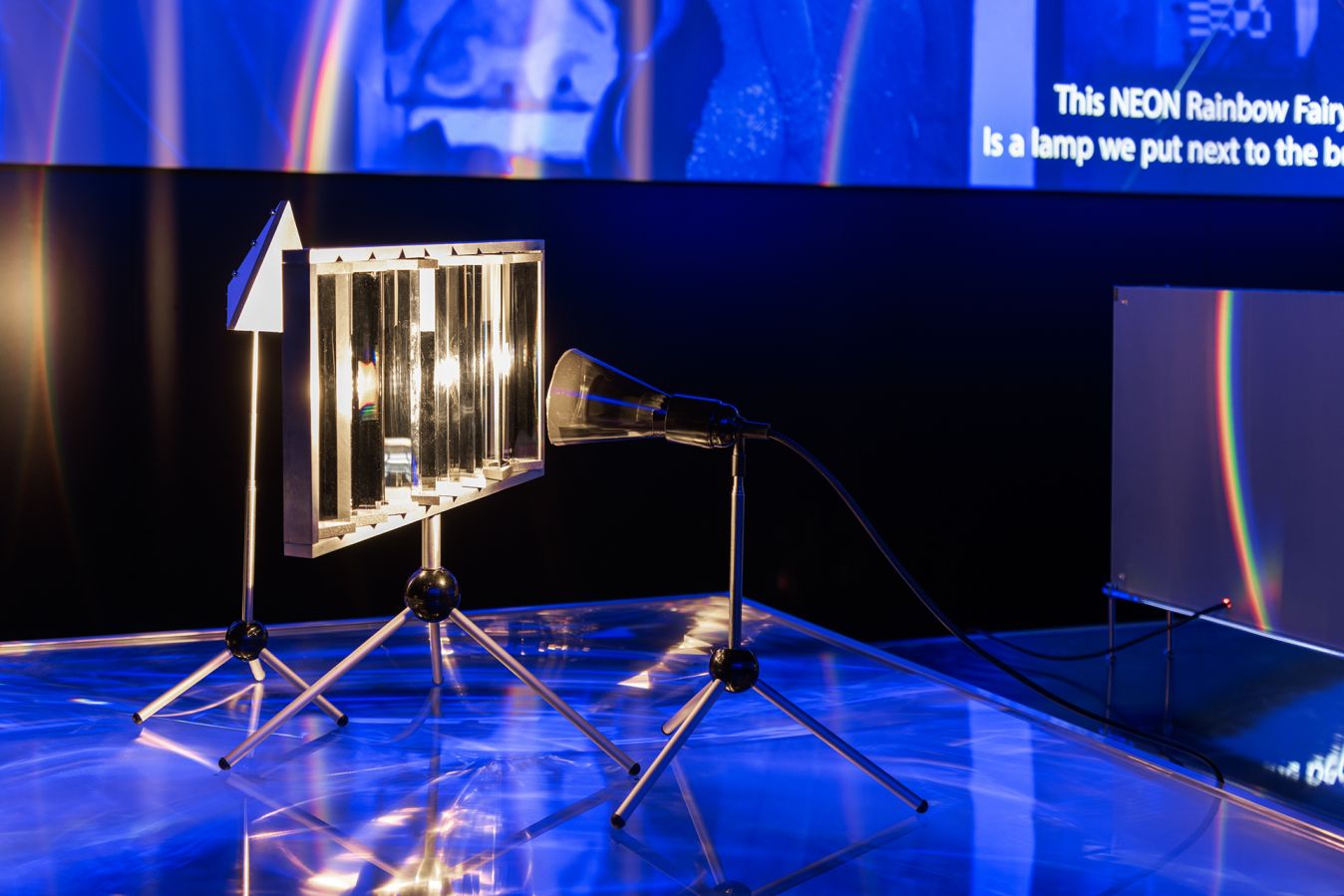
A Spectrum of Lost and Unnamed Colours, Rosa Menkman, 2024
© the artist and EPFL Enter the Hyper-Scientific.
Photo: Remy Ugarte Vallejos
- Rosa Menkman
Rosa Menkman is a Dutch artist and researcher. Her work focuses on noise artifacts that result from accidents in analogue and digital media, artifacts that can offer precious insights into the otherwise obscure alchemy of standardization and resolution-setting. Menkman’s Glitch Moment/um (inc, 2011) is a little book on the exploitation and popularization of glitch artifacts that acts as a compendium to her research. A second book, Beyond Resolution (i.R.D., 2020), further develops and highlights the politics of resolution-setting; it shows how the standardization of resolutions generally promotes efficiency, order, and functionality in our technologies but has the side effect of compromising and obfuscating alternative possibilities.
In 2019 Menkman was awarded the Collide, Arts at CERN Barcelona residency, which inspired her recent research into what makes things im/possible, including im/possible images. In this new line of research, she aims to find new ways to understand, use, and perceive through interaction with technologies.
- Enter the Hyper-Scientific
Initiated by the EPFL College of Humanities (CDH), amplified by EPFL Pavilions, and in partnership with the City of Lausanne, the EPFL-CDH Artist-in-Residence (AiR) Program Enter the Hyper-Scientific reflects the CDH mission of fostering transdisciplinary encounters and collaborations between artists and EPFL’s scientific community. The program invites professional Swiss and international artists for three-month residencies to realize innovative and visionary projects at the intersection of art, science, and advanced technologies.
